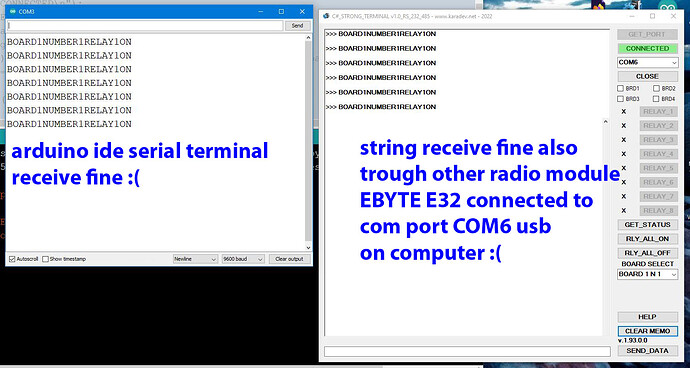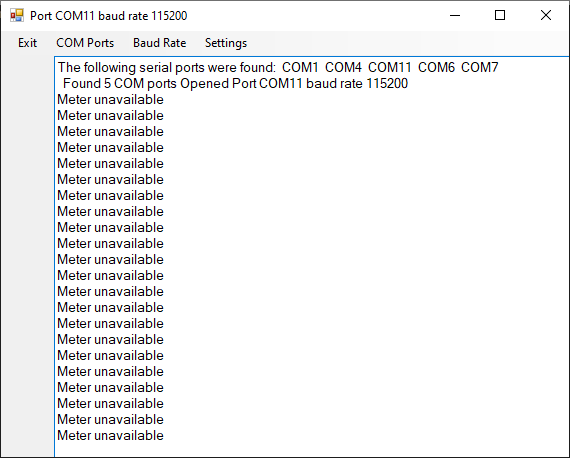C# win10 serial terminal not receiving STRINGS from pico + arduino ide
so, since I have a project for a relay system that requires the development of a dedicated serial terminal to control the relay system by exchanging standard text messages /strings/, I decided to make my own with functionalities necessary to control the entire relay system through the USB serial port . I'm using the pico's USB serial port, with the commands in the software, which is a standard example for all arduino/pico boards:
MyStringON = "BOARD1NUMBER1RELAY1ON\n";
Serial.begin(9600);
Serial.println(MyStringON);
you know how this code works without giving the full version of the source code.
for developing the serial terminal I use visual studio enterprise 2022
the driver for the pico is Earl Philopower version 2.7.1
the pico is the LAN pico with the wiznet W5100s lan controller, but the lan network and strings there work without a problem. the whole system will be controlled via the Internet, there are 4 boards with 8 relays in total, each board having a radio module EBYTE E32 >> Serial2.xxx();
the central board also has the same radio module for connection with the other boards in a radius of 400 meters, which is in the picture, there is also a LAN module that will be a client connecting to the other LAN pico in another city trough internet, which will be a server in other town of owner of system.
I want through the serial port of the USB board shown in the picture to be able to receive/send the same strings that I receive/send over the lan network. a kind of echo for the commands that pass through the LAN link between the client and the server.
viber_image_2023-01-22_10-33-32-041|666x500
however, there was a communication problem that I assume has happened to other users. I make my serial terminal program in visual studio C# programming language, standard windows application project with ready made serial port module/component from visual studio.
and I've made a serial terminal with visual studio before to connect to peak micro processors, I didn't have a similar problem communicating to and from the peak processors with the string messages.
to the board, as you can see, there is a connected module of the company EBYTE E32 radio module 433MHZ, through which the string messages are received and transmitted normally, just as they were written in advance in the source code of the terminal or as you can send yourself a random string message from the command line at -down in the program.
terminal_not_show_string|644x500
the problem is that on the USB serial port of the LAN PICO BOARD connected with a cable to the computer, the messages are sent normally and in the serial monitor of the arduino ide 1.8.19, the strings are visible normally. also in the COOL TERM program when I connect to the USB serial port Serial.xxx(); strings are also received and transmitted normally. only my program developed in C# does not want to accept and pass them from the board and to the board.
if anyone has had this happen to me using C# with visual studio for serial port please share how they solved this problem.
I am also giving you some screenshots of the code I made in the serial terminal. one picture shows the code of the button to connect to the serial port, the other picture is of the code that is logging the event when receiving the strings and/or other data through the serial port.












